MONIQUE RICCARDI-CUBITT
POET, ART HISTORIAN, AUTHOR, LECTURER
WHO AM I?
I am a French native, British by marriage, Roman by adoption. I lecture and write in French, English and Italian. A British art historian and author, I was the director of an art history course at Sothebys and created my own Riccardi Institute of Art in London. I published a reference book on cabinetmaking in London, New York, Paris and Milan, as well as many articles on the decorative arts in art dictionaries and magazines.
I have travelled extensively in the Near and Middle East, where I lectured in Beirut at the American University Museum, and in Saudi Arabia at the National Museum in Rhyad.
I lecture for universities, museums and cultural associations and organize exhibitions on art and Napoleonic topics with the support of the Fondation Napoléon. I write poetry, for which I was awarded prizes, and essays on current political issues in France and in Europe.
See samples of my work here:
https://www.linkedin.com/in/monique-riccardi-cubitt-27834682/
http://www.oxfordartonline.com/groveart/view/10.1093/gao/9781884446054.001.0001/oao-9781884446054-e-7000029314
http://www.britishartjournal.co.uk
https://blogs.mediapart.fr/monique-riccardi-cubitt
http://www.conservatives-paris.org/our-blog
1. FRANCE. CHILDHOOD & TEENAGE
I was born at the Hermitage, at the Chemin du Paradis, at La Chaussée Saint-Victor, near Blois, in my paternal grand-father's house, an horticulturist, beekeeper, watercolourist and humanist, where I spent my early childhood.
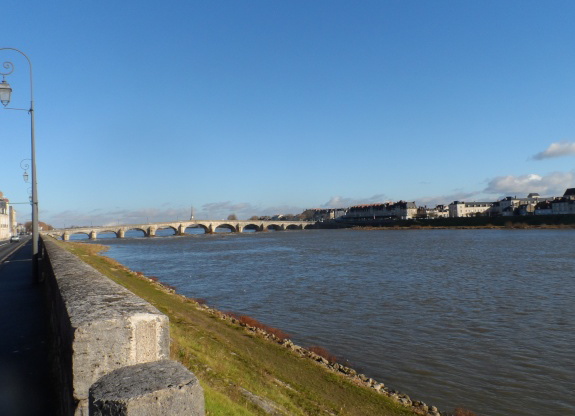
The Loire, the last wild river in Europe, flows with regal majesty at
Blois under the Jacques-Gabriel bridge, 1717-24.
From the age of seven to fourteen, I lived in the Sologne region, the country of Alain Fournier's Grand Meaulnes and Maurice Genevoix's Raboliot, on the Rivaulde estate, at Salbris, where I was educated by the Sisters of Saint Paul of Chartres, at the Providence school, before boarding at the College Sainte-Marie of Blois. Salbris is at 30km from Aubigny-sur- Nère, the Stuarts' city given by Charles VII to John Stewart of Darnley in 1423 for his support during the Hundred Years War, according to the Auld Alliance between France and Scotland. Aubigny remained Scottish until 1743, at the death of Louise de Kérouaille, duchess of Portsmouth and of Aubigny. She was Charles II Stuart's mistress and secret agent to Louis XIV.
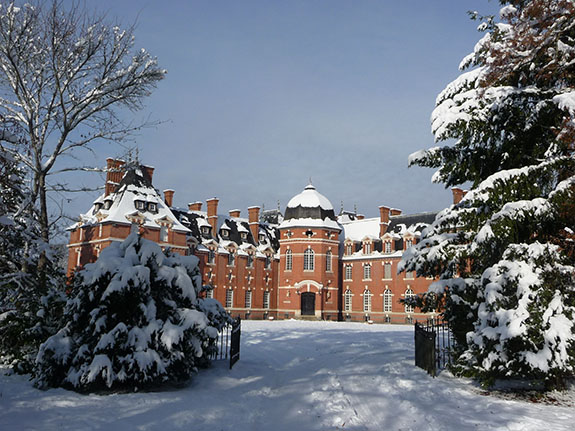
The Rivaulde chateau, Salbris, built in 1897 by the architect
Ernest Sanson for the industrialist and politician Henri Schneider, on the
site of an 18th century hunting lodge.
Photo Liliane Codant, 2010
2. EDUCATION
Collège Sainte-Marie of Blois, Baccalauréat in Philosophy
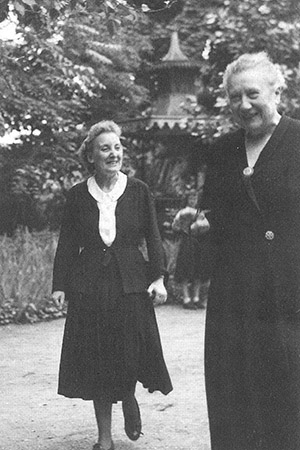
Mlle Mercier et Mme Daniélou in the garden of Sainte-Marie of Neuilly, 1947.
Mlle Mercier, was an outstanding and inspired professor who taught me
philosophy and became my guide and intellectual mentor.She followed
Mme Daniélou's precepts, the foundress of the Saint François-Xavier
Community, 1911, et des Collèges Sainte-Marie, 1913: 'To discern the
creative impetus in a person and to follow it, ... To discern also God's
design on him or her and to support it'. She predicted my career as an
historian and my life engagement : ' Wherever you will be, whatever you
do, whenever there is injustice in this world, you will be there, you will
stand up and be counted'. Sainte-Marie's education reflected the Jesuit
universal spirit , as well as Maria Montessori's educational method : ' The
child is the father of the adult', and Rudolf Steiner's : 'In truth it is
not a question of receiving a finished preparation at school, but to prepare
oneself to receive it from life'. My love for England had been awakened as
a child while reading Dickens's David Copperfield and Sir Conan Doyle's
The Hound of the Baskerville. The study of Shakespeare's The Tempest at
Sainte-Marie won me over through its poetry, magic and esoterism. I then
knew that I would become an anglophile to enter the modern world.
Tours university, Faculté de Lettres (English Studies)
Mayfield Convent of the Holy Child of Jesus : The Cambridge Diploma of Proficiency in English)
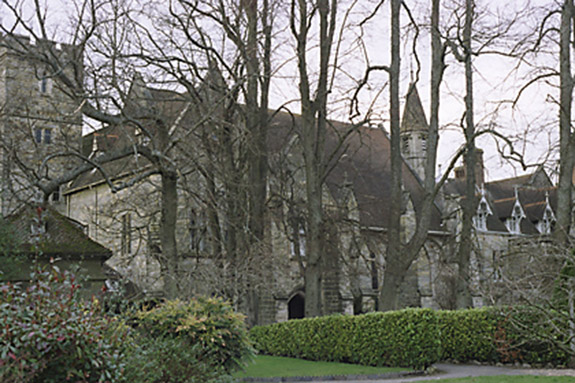 Through the friendship of an exeptionally charismatic and solar woman,
Sister Claudia Dalgish, whom I had seconded for a year at the Neuilly Holy
Child Jesus Montessori school, I finished my English studies at the Holy Child
Jesus Convent in Mayfield, Sussex, where I was the French assistant teacher.
The 14th century Old Palace was the archbishop of Canterbury's former palace.
It was restored and converted by E.W. Pugin, 1863-6, for Cornelia Connelly, an
American convert, foundress of the Society of the Holy Child Jesus, of Jesuit
inspiration c. 1846. On her tomb, in the Old Palace's chapel in Mayfield, is
written the epitaph : 'Love knoweth no measure. Feareth no labour.Findeth rest
in God alone', which could also describe my own life experience.
Through the friendship of an exeptionally charismatic and solar woman,
Sister Claudia Dalgish, whom I had seconded for a year at the Neuilly Holy
Child Jesus Montessori school, I finished my English studies at the Holy Child
Jesus Convent in Mayfield, Sussex, where I was the French assistant teacher.
The 14th century Old Palace was the archbishop of Canterbury's former palace.
It was restored and converted by E.W. Pugin, 1863-6, for Cornelia Connelly, an
American convert, foundress of the Society of the Holy Child Jesus, of Jesuit
inspiration c. 1846. On her tomb, in the Old Palace's chapel in Mayfield, is
written the epitaph : 'Love knoweth no measure. Feareth no labour.Findeth rest
in God alone', which could also describe my own life experience.
3. ENGLAND & THE MIDDLE EAST
I came back to Paris where I worked for the American bank, Morgan Guaranty Trust, as a bilingual receptionist, to finance my studies at the École du Louvre. I always returned to England to visit my friends at Stockbridge, Hampshire, where they lived in the White House, the former country house of Lily Langtry, the Jersey lily, Edward VII's mistress.
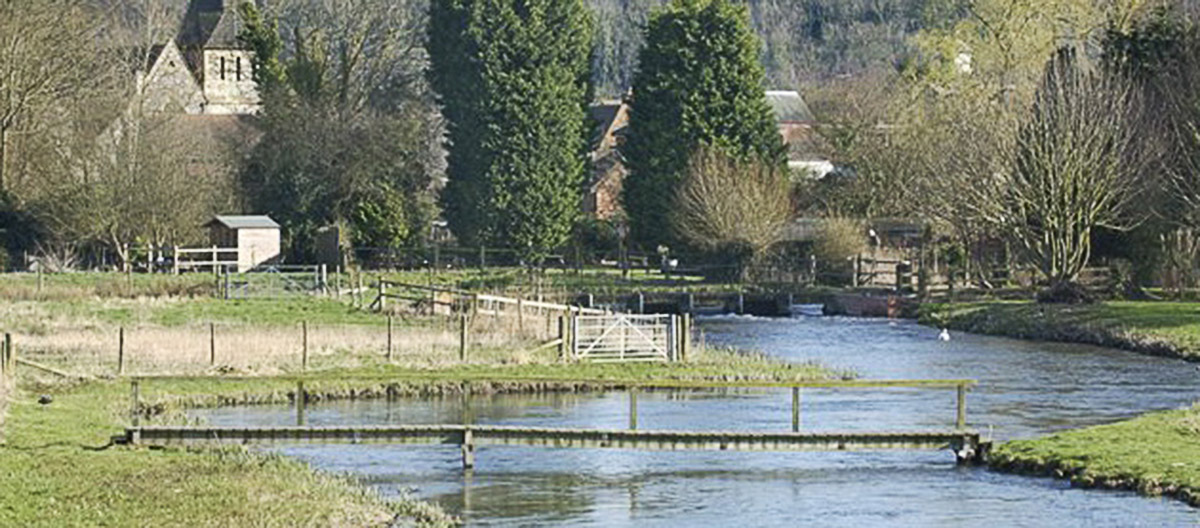
Stockbridge, Hampshire, on the Test river, one of the most famous
trout fishing chalk streams in England.
Jennifer Donaldson's family had lived in Beirut, and through her friendship, the Middle East physically entered my life. The magical lure of the Orient had fired my heart and imagination when, as a child, I had read Torquato Tasso's epic poem Jerusalem liberated, in an old volume, beautifully illustrated with engravings, from my grandfather's library. At the École du Louvre, I studied the art and culture of the Ancient Orient : Assyria, Mesopotamia, Egypt, then the Classical art of Greece and Rome. Egypt immediately struck a chord in my heart under the inspired guidance of the archeologist Christiane Desroches-Noblecourt. When I met Bob Alexander, a barrister and Queen's Counsel, who was a great supporter of the Conservative Party, and became eventually Baron Alexander of Weedon under the Thatcher government, with Jennifer Donaldson, he gave me the volume of The Prophet by Khalil Gibran she had offerd him. I was immediately enthralled by his luminous spirituality and his talent as a painter : he had studied art in Paris, and painted Rodin and Jung's portraits.
I missed England, and after some two years in Paris, to be near my friends again, I looked for work in London. This is how I met Michael Cubitt, who became my husband. At our very first meeting, the Middle East brought us together : Egypt and Lebanon where he had lived, as much as our common life experience in the cruel rejection of our respective family, our spirituality and study of esoterism, our love of poetry, history, nature, and our shared sense of humour. We started a dialogue which never ended in a true union of heart, soul and spirit.
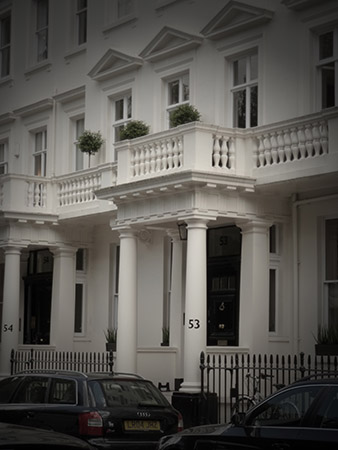
The house where I met my husband and lived all my London life, Warwick Square,
Pimlico, built in 1840 by his ancestor Thomas Cubitt 'master builder'. He was a close
friend of Queen Victoria and Prince Albert, and developed in London the district of
Bloomsbury, and Belgravia and Pimlico for the Duke of Westminster. He never visited
Greece nor Itlay, yet was inspired by classical architecture. He restored Buckingham
Palace, and built for Queen Victoria, who used to call him affectionately 'our Cubitt',
the italianate villa of Osborne House, on the isle of Wight where she died in 1901.
My husband's branch of the family comes from Lewis Cubitt, Thomas's youngest
brother, with whom he collaborated. Lewis Cubitt became a civil engineer, and built,
among others, King's Cross Station in London, 1854, and the
Great Northern Hotel nearby.
After our mariage, my husband took on again the Italian family name and title renounced by his father during the Second World War. His grandfather, Thomas Cubitt, had converted to catholicism at Oxford under the influence of Cardinal Newman. He married an Italian contessa, Fede Riccardi, the last of a long and prestigious line, whose father, Conte Adolfo Riccardi from Florence, had served as aide de camp to three kings of Italy. In order to insure their survival, he took on her name and title in 1904 by Royal Warrant of King Victor-Emanuel III of Italy, endorsed by Edward VII of England in 1907.
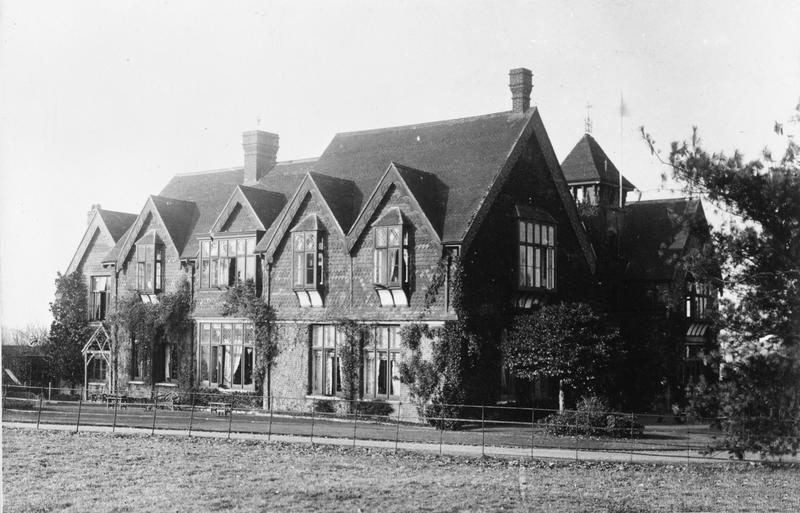
Eden Hall, Edenbridge, Kent, c. 1914, Michael Riccardi-Cubitts
family home
Count Riccardi-Cubitt was educated at the Benedictine college of Ampleforth, and in time became a Knight of Honour and Devotion of the Sovereign Military Hospitaller Order of St. John of Jerusalem, of Rhodes and of Malta. At the beginning of the war he was the youngest officer in the British army. He served in the famous regiment of the Rifle Brigade, The Green Jackets, renowned for its role at Waterloo. He fought in Egypt in the Western desert, before being caught by the German armies in 1943 on the island of Leros in Greece. He was detained as a prisoner of war in the Brunswick camp, OFLAG 79, and was released by the American forces in 1945 on St. Georges' Day. Carrying on his action in Military Intelligence during the war, he studied the Arab culture and language at the Middle East Centre of Arabic Studies, MECAS, in Jerusalem with Sir Bertram Thomas, his mentor, entering the British Intelligence agency, MI6, and serving as aide de camp to Sir Desmond Morton on the Military Mission in Egypt. When he left the army, he worked in public relations and communication for Irak Petroleum Company, IPC, later British Petroleum, BP, in London, Rome and Beirut. When we met, he was living in London where he had opened his own consulting company for public relations between London and the Middle East, representing Tunisia, among other countries.
He published a book of poems in Beirut, Wonderland, with a preface by one of his closest friend, mentor and surrogate father, Sir Harry Luke, former High Commissioner of Palestine and of the Southern Pacific, Governor of Fiji. The first poem, The Great Pan is dead is a reference to Plutarch announcing the end of oracles and of the Antique World.
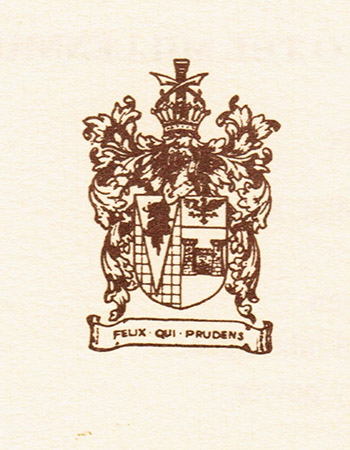
The Riccardi-Cubitt coat-of-arms with the Cubitt motto :
Felix qui Prudens
I happily assisted him in his work, and travelled with him to several Middle Eastern countries, Egypt in particular, also to Muscat in Oman, and to the Qatar. After his death, I visited the Lebanon and Saudi Arabia, where I gave a lecture at the American University Museum in Beirut, and at the National Museum in Riyadh, on the Islamic influence on Western art.
My husband's suicide after a long depressive illness, both chronic and hereditary, marked a decisive turn in my life. I assumed his spiritual heritage, remaining loyal to his ideals in death as in life. I entered on a spiritual quest which led me to retrace the journey of the beloved, who had been a father figure and a mentor, in an absence which is also a presence. I endeavoured to realize the dream he had given up when he had left the Lebanon, 'to be a bridge between the East and the West', in order to reconcile in my own life the Orient and the Occident, as much as the Atlantic and the Mediterranean
My love for the Middle East always brought me back to Egypt, where I lectured on cruises on the Nile, the second river that flows in my veins after the Loire. Egypt is a blessed land for me, as is Italy, and the Egyptians have always done me the honour to see me as one of theirs, a Circassian. Which was confirmed by a Libyan friend in Rome, Dr. Fouad Mustafi Kabazzi, who belonged to an ancient Circassian family. He was a magus and a poet, an erudite mystic who translated the Qu'ran in Italian, and was ambassador to the Vatican. During my mariage I had often stayed in Cairo at the Garden City house of Mrs Sabet. She was of Mameluk origins, a cousin of King Farouk, widowed of an Egyptian ambassador to the Court of St. James's, and the mother of one of my husband's friends. She was a remarkable woman, very cultured and of a profound spirituality. Strong bonds of affection and mutual respect grew between us and lasted until her death. She introduced me to the beauty, the poetry, and the sophistication of oriental life.
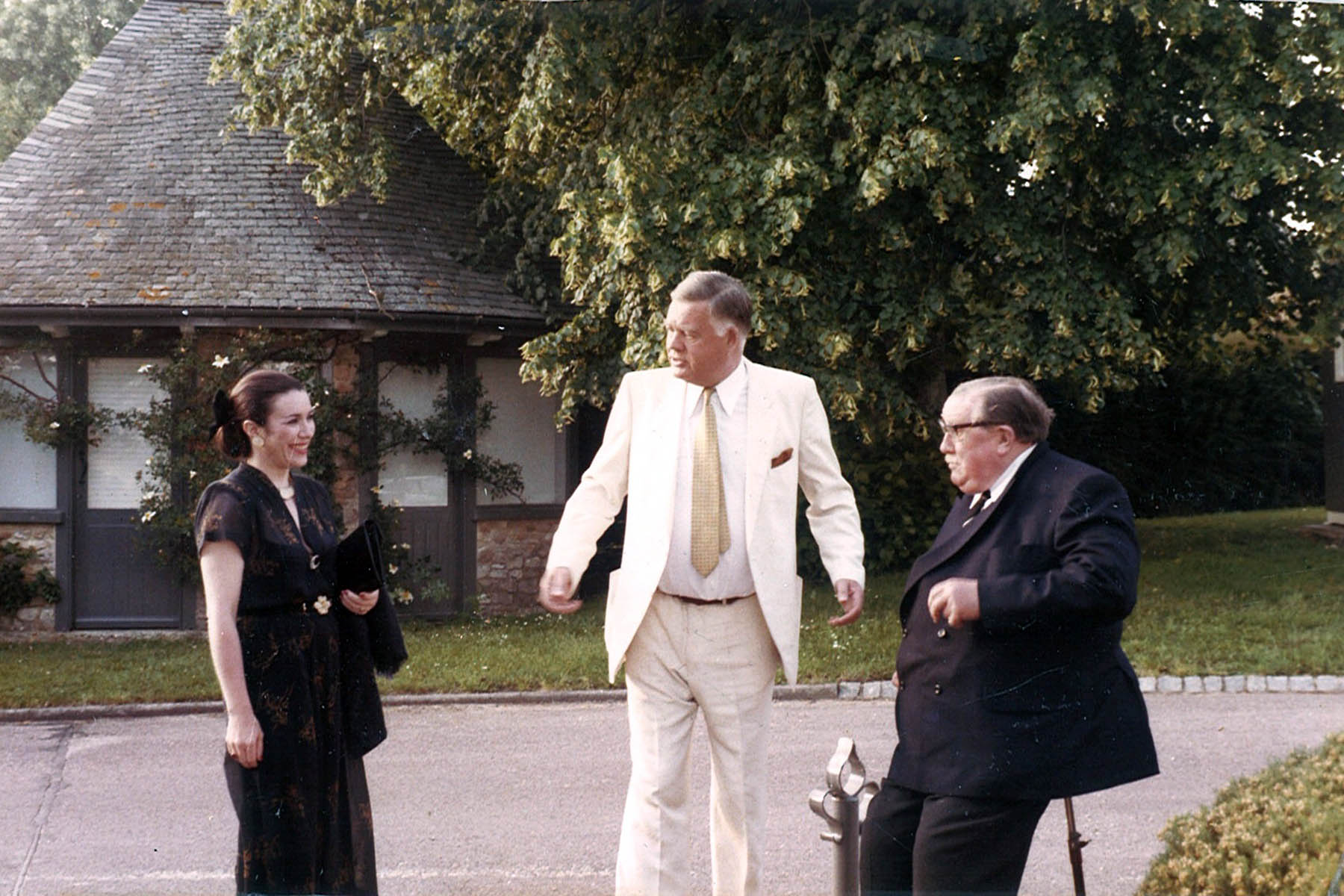
My husband introduces me to David Pathenot, of the British Intelligence Services
MI6, at Palace House, Beaulieu, Hampshire, his cousin Edward Montagu of Beaulieu's
estate, on the 90th birthday of his mother, Pearl Pleydell-Bouverie, 7th July 1985
4. ART HISTORIAN & LECTURER
In London I had taken up again my art history studies at the University of London, at first part-time. But the relapse and progress of my husband's depressive illness, after years of respite, made me consider seriously of becoming a professionnal.
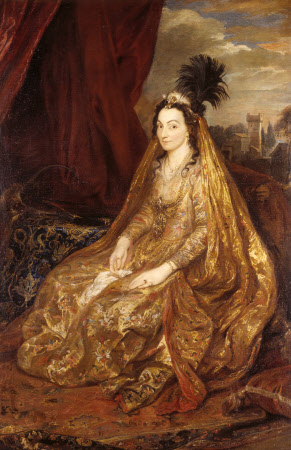
Portrait of Teresia Khan, Lady Shirley, by Sir Anthony Van Dyck, 1622, of Circassian
origins, in national costume. She married Sir Robert Shirley, the English ambassador of
the Shah of Persia in Rome (Coll. National Trust, Petworth House, West Sussex).
Her descendant, Maria Shirley, sculptor and art history lecturer at the Birbeck
College in Londres, was my lecturer at the London University Extra-Mural Department,
where I prepared a diploma, before becoming my tutor, to obtain a BA Hons. Art
History at the Courtauld Institute in London as an independent student, as I had
to support my sick husband morally and financially. Maria Shirley became a close
friend and a mentor, who shared with me all her knowledge, and her love for the
classical art of Greece and Rome, with enthusiasm and passion, in inspired and
stimulating lectures and erudite conversations. She looked astoninshingly like her
ancestor, she told me about her portrait by Van Dyck, together with her husband's
in Persian garb, in the Earl of Egremont's collection.
Photo Petworth ©National Trust Images/Derrick E. Witty.
Diploma in Art History of the Extra-Mural Department, London
University
Diploma of The Study Centre for the Fine and Decorative Arts, London, (The V&A Course)
BA Hons. (Art History), The Courtauld Institute, London University
My earlier teaching experience allowed me to become an art history lecturer very quickly. I specialized in French decorative art and gave lectures on French furniture at my alma mater, the Study Centre, at the Victoria & Albert Museum (V&A), the Wallace Collection, and among others, to future auctioneers and valuers at The Incorporated Society of Auctioneers and Valuers, Southampton University.
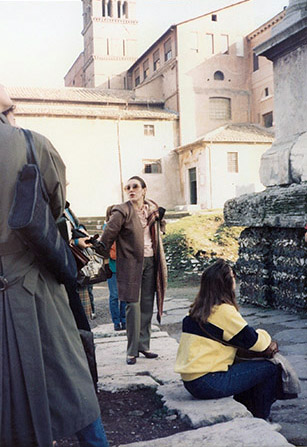
Sotheby's. Study tour in Rome, 1985.
Photo Linda Cook
In a short time I became the director of a preliminary course in art history at Sotheby's, the Styles in Art course. Three years later I opened my institute, The Riccardi Institute of Art, for international students, mainly adult women from the Middle East. They became my friends. Their spirituality, their generosity, their charm, their elegance and beauty, were of a great comfort at my husband's death, and they invited me to the Lebanon and Saudi Arabia
5. ITALY & MARIO PRAZ
A cycle was ending, and after settling my husband's business affairs, I was also director of his company, I published a book of reference on cabinetmaking, before leaving my London home. I could not assume any longer the expenses without making further personal sacrifices. I had had the intuition that, from now on, my life must be dedicated to my talents as an artist, a writer and a poet. My husband's illness had not allowed me to let them express themselves. Now my life had to take on a new turn to sustain my creativity, and bring me support and inspiration.
Italy had been part of my life from childhood, in the Loire Valley, in its way of life, literature, art and architecture, without mentioning gastronomy, as I discovered on my first visit to Florence, which reminded me of Blois. As a teenager I had discovered Rome's influence on a cultural journey to Provence, the provincia beloved of the Romans. The luminosity of its sky, its classical monuments, its white and terracotta houses with pink tiles, all touched my soul like a faraway echo. I then knew that, one day, Italy would be as important for me as England. My husband felt himself first and foremost a Roman. He made me discover the treasures of the Eternal City where he had lived as a young man, in a palazzo in Via Giulia. I later discovered that it was was near Palazzo Ricci, where Mario Praz had lived, the man who would open for me all doors in Rome through his collection and his writings.
Some months before my husband's death, a distant Italian cousin, Giorgio Garbasso, had contacted us, and we had stayed with him and his wife, Luciana, in their Veneto estate and at Porto Ercole. Through them we had met some of their relatives, Alberto and Fulvia Carnaroli from Milan. Fulvia belonged to the Resta Pallavicino family, her father had been an associate of the Agnelli family in the 30's, and they had drained and developed together the Grosseto area in the Maremma. He had buit a villa on the lagoon at Capalbio. Fulvia became a dear friend, she used to attend my lectures in London, where she had a flat, and I spent some happy holidays with her and her family at Capalbio.
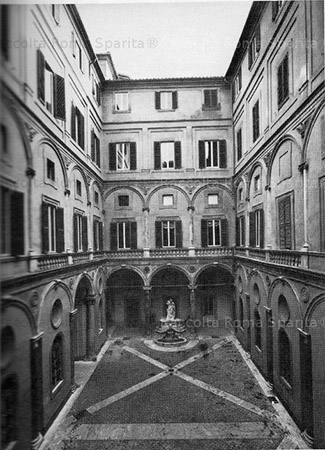
The Palazzo Medici Lante della Rovere, Piazza dei Caprettari, 70, in Rome,
built on the site of Agrippa's baths, Ist century A.D., in 1516, by Alfonsina
Orsini, wife of Piero dei Medici, and inherited by her brother-in-law, Giovanni
dei Medici, who became Pope Leone X. Catarina dei Medici lived there before
becoming Queen of France in 1533. The palazzo was bought by Ludovico Lante
in 1558. It was built by the Tuscan architects Giovanni da Sangallo et Nanni
di Baccio Bigio. The columns from the loggia probably come from the Colosseum.
They adorn one of the most handsome Italian Renaissance courtyard, where appear
the coat-of-arms of the families who have owned it. I reopened there the Riccardi
Institute of Art, and gave lectures in its saloni decorated with religious and
mythological frescoes from the 16th to the 18th century.
While on holidays in Capalbio, we visited every year a nearby Etruscan archeological site : Orvieto, Volterra, Vulci, Cerveteri, Tarquinia. The telluric force of this land of fire always renewed my creative energy and stimulated my imagination. When I left London, I spent some months in Florence improving my Italian, and decided to settle in Rome, a more cosmopolitant city where I could find some work opportunities. I became the representative of an art magazine belonging to a London friend and colleague. I had already contributed to Antiques Magazine before it became Antique Interiors International, and Alistair Hicks then commissioned me an article on the recently opened Museo Praz. Thus a new project was born, a research, a close intellectual and artistic symbiosis with an exceptional character. Mario Praz (1896-1982) had been an aesthete, a distinguished anglophile, author and collector of the Empire period, a friend of the French collector Paul Marmottan. He became for me a mentor and a guide through his writings and collection. All doors opened for me in Rome, and he brought me back to the Warburg Institute at the University of London, where Maria Shirley had wanted me to study with Frances Yates. Sadly, my circumstances had prevented me doing so.
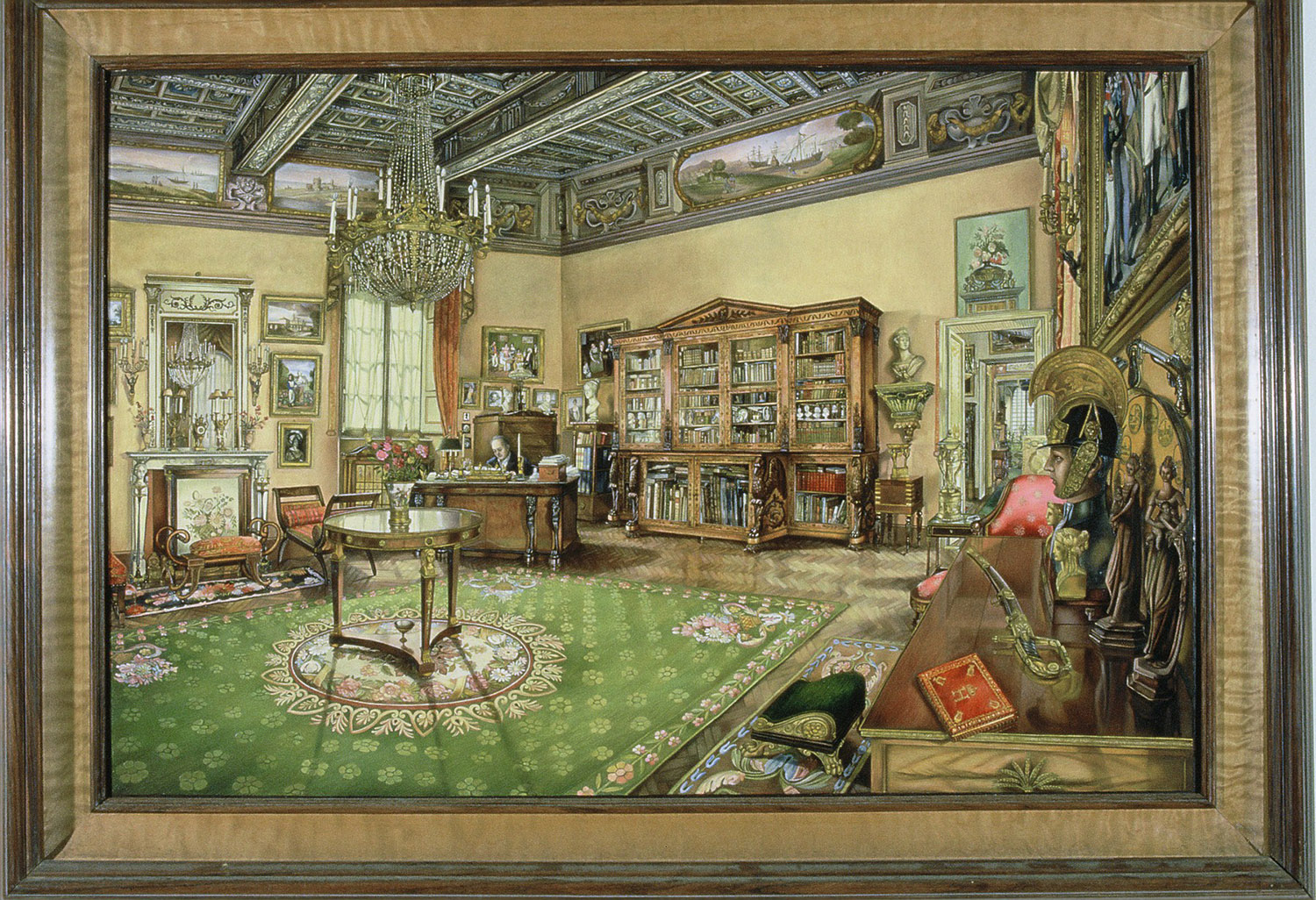
MARIO PRAZ 's portrait in the Palazzo Ricci salone, via Giulia, 1963.
Watercolour by Sergio di Francesco. Collection Museo Praz.
Photo Massimo Listri
6. MAIN PUBLICATIONS & WORK IN PROGRESS
- 1982 JUST OFF THE AUTOROUTE, A Guide to France for the British traveller, Cadogan Books
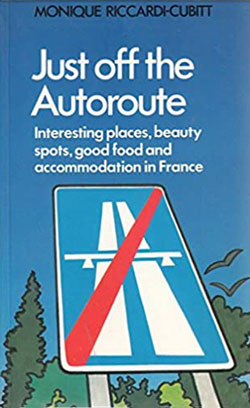
- 1992 THE ART OF THE CABINET, Thames and Hudson, London/New York
- 1993 UN ART EUROPEEN. LE CABINET DE LA RENAISSANCE A L'EPOQUE MODERNE,
Les Éditions de L'Amateur, Paris, MOBILI DI COLLEZIONE, TIPI E STUDIOLI
NEI SECOLI, Garzanti, Milan
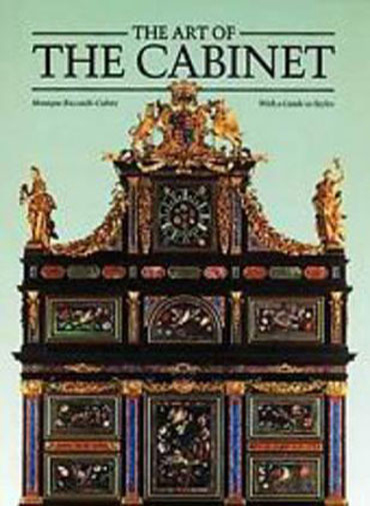
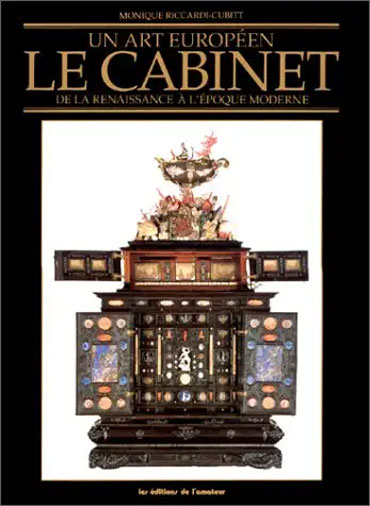
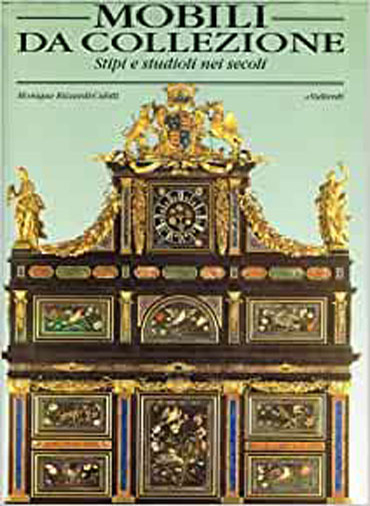
- 1996 THE GROVE DICTIONARY OF ART, Macmillan,London/NewYork,
17 articles on styles, ornaments and French decorative arts, revised and enlarged, 2016, Oxford
University Press.
Grove art on line http://www.oxfordartonline.com/groveart/view/10.1093/gao/9781884446054.001.0001/oao-9781884446054-e-7000029314 - 1999 MARIO PRAZ, ANGLOPHILE AND AESTHETE (1896-1982), The British Art Journal,Vol.1, N.1. http://www.britishartjournal.co.uk
- 2000 THE DUKE OF BUCKINGHAM'S CABINET D'AMATEUR C.1628; AN AESTHETIC,
RELIGIOUS AND POLITICAL STATEMENT, (with an attribution to Van Dyck), The British Art Journal,
VOL.1 N.2
http://www.britishartjournal.co.uk - 2010 January, A 17TH CENTURY PARISIAN PALACE IN PERIL. THE HÔTEL LAMBERT IN PARIS, 1640-44, Louis le Vau ‘s first masterpiece anticipating Vaux-le-Vicomte and Versailles, now the property of the Al-Thani Royal family of Quatar, Country Life Magazine, http://www.countrylife.co.uk
- 2014 June, EXILED IN DEATH, James II Stuart’s funerary monuments in Paris, Country Life Magazine
- 2015 June, MALMAISON AN EARTHLY PARADISE, The Empress Joséphine‘s country retreat, Country Life Magazine
- 2018 Co-ordinator of the symposium Mario Praz et le goût européen, an event during the Année Européenne du Patrimoine Culturel 2018 of the Ministère de la Culture, at the ISTITUTO ITALIANO DI CULTURA, Paris: https://openagenda.com/annee-europeenne-du-patrimoine-culturel-2018/events/symposium-mario-praz
-
2019 Art & PR Adviser for Rarefare at MANIFATTURA MILANESE, www.manifatturamilanese.it, a firm
from Milan created to produce contemporary cabinets based on my book THE ART OF THE CABINET,
Thames & Hudson, London/New York 1992, Le cabinet un art européen, Édition de l'Amateur, Paris,
1993, Bibliothèque Nationale de France : BNF GALLICA https://catalogue.bnf.fr/ark:/12148/cb123927189
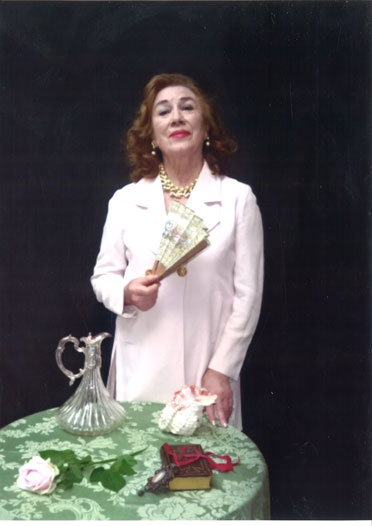
-
2021
LE PEINTRE GEORGES MOREAU DE TOURS (1848-1901) ET SA FAMILLE ENTRE PARIS ET BOIS-LE-ROI, Fontainebleau Revue d'Histoire de la ville et de sa région n°19, avril 2021, Société d'histoire de Fontainebleau et de sa région http://www.revue-histoire-fontainebleau.fr.
Thanks to this original research since 2018 on Georges Moreau de Tours’s life and work, his painting Ptolémée au tombeau d’Alexandre realized for the Concours du Prix de Rome in 1878, in the collection of the Bois-le-Roi Mairie, has been listed under the Historical Monuments Act by decree of the Ministère de la Culture on April 13th 2021.
Founder Chairwoman of the Association des Amis de Georges Moreau de Tours in Bois-le-Roi https://amisdemoreaudetours.com/
Hervé LE DANTEC is Vice-Chairman, his grand-father Yves-Gérard Le Dantec was Baudelaire expert for the publishers Gallimard. Yves-Gérard’s uncle, Félix Le Dantec, was a biologist who collaborated with Pasteur, and a philosopher of sciences who contributed to La Revue Blanche, the literary magazine to which the greatest artists and intellectuals of the time collaborated. In 1903 he was depicted in Théo Van Rysselberghe’s painting The Reading by Émile Verhaeren, sitting on the poet’s left in company, among others, of the 1911 Nobel Prize for Literature, Maurice Maeterlinck, the art critic Félix Fénéon, and André Gide, the writer and friend of the painter, Nobel Prize in 1947.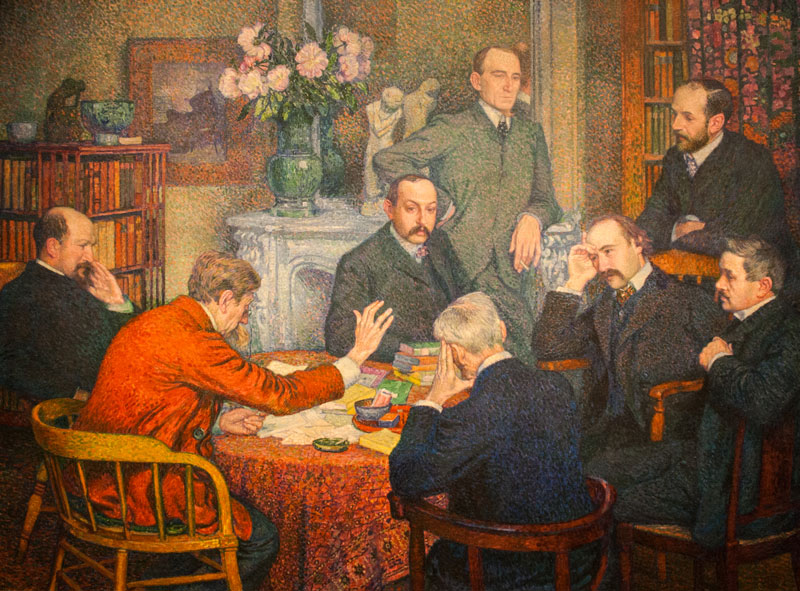
- 2022
February UT PICURA POESIS, a monography on the contemporary artist Clément Denis, bilingual edition French/English, Éditions Lord Byron, Paris https://editions-lord-byron.fr/pages/editions-lord-byron
November BOIS-LE-ROI, VILLAGE D’ART. LES ARTISTE DE LA BOHÈME DANS LA COLLECTION DE LA MAIRIE, Fontainebleau Revue d’Histoire de la ville et de sa région, N. 22 http://www.revue-histoire-fontainebleau.fr
LA VIE DE BOHÈME À BOIS LE ROI/ ART, POLITIQUE ET NATURALISME, Éditions du Puits Fleuri, Héricy https://www.puitsfleuri.com/regionalisme/332-la-vie-de-boheme-a-bois-le-roi.html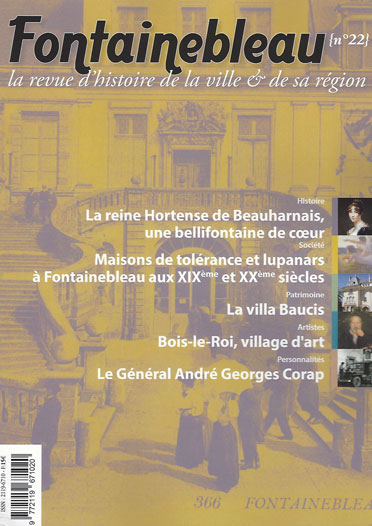
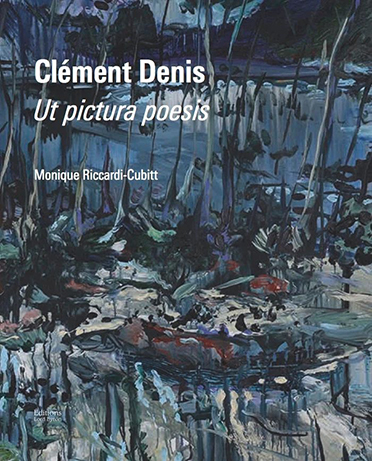
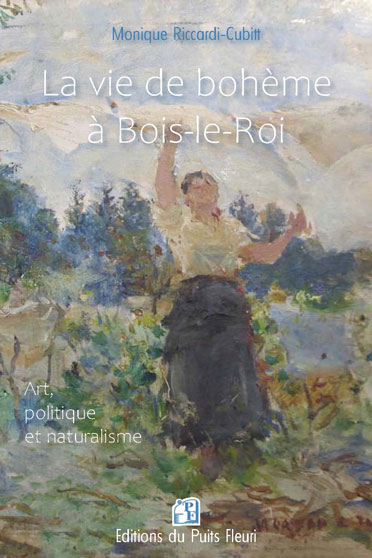
WORK IN PROGRESS
- Mario Praz : a documentary film and biography
- An exhibition on the Napoleonic myth in British collections with the scientific collaboration of Peter Hicks, International Affairs Manager at the Fondation Napoléon : http://fondationnapoleon.org/organisation/lequipe/
- The history of the Stuart dynasty in France and Italy,
see EXILED IN DEATH, an article on James II, Country Life, 25 June 2014
http://www.countrylife.co.uk
MEMBERSHIPS
- Member of the Chartered Institute of Journalists, London
http://cioj.co.uk - Member of La Société des Gens de Lettres de France, Paris
https://membres.sgdl.org/Account/Biographie.aspx - MEDIAPART https://blogs.mediapart.fr/monique-riccardi-cubitt/blog
7. POETRY, MUSIC & DANCE
The Loire Valley 's native refinement of language, common courtesy, subtle mind and learning, go back a long way. At the end of the 6th century, the bishop and saint, Gregory of Tours, wrote the Historia Francorum (History of the Franks). In the 9th century, Alcuin, the learned English monk, friend of Charlemagne, brought the Carolingian Renaissance to Tours. In the 14th century, Valentina Visconti, Duchess of Milan, brought over the elegance and sophistication of the Italian Renaissance. She held a learned humanist court at the château of Blois, where her son, the poet, Charles d'Orléans, lived after his return from the Tower of London, prisoner as a hostage captured at Agincourt. In Blois, he attracted humanists and poets, holding poetic contests where François Villon excelled : 'I die of thirst near the fountain...'. I visited Talcy, and sat on the edge of the well where Ronsard, 'Prince of poets and poet of princes', courted the beautiful Cassandra Salviati. The French poets of the Pléiade emulated the Italian dolce stil novo in the use of the vernacular. The Angevin Joachim du Bellay celebrated it in the Défense et illustration de la langue française, while the châteaux on the Loire were built in the local white tuffeau stone, combining Medieval knowledge with Italian elegance. Leonardo da Vinci, who lived and died at Amboise, contributed to the building of Chambord, and designed the ideal capital city of Romorantin for his friend François I. Blois was a royal city for 300 years : two Medici queens lived there, Catarina and Maria, and Gaston d'Orléans, Louis XIV's brother, and his daughter, La Grande Mademoiselle, endowed the château with a new wing.
No other part in the world counts as many gracious mansions and châteaux, as many writers and poets, as the Loire Valley. The erudite humanist François Rabelais, a lover of Rome, was born near Chinon, the mathematician and philosopher René Descartes, at La Haye-Descartes, Alfred de Vigny at Loches, in the Indre valley. The latter place inspired Balzac, who used to travel from Tours to stay at the château of Saché. Charles Perrault conceived the Sleeping Beauty tale at the château of Ussé. The mystical and visionary poet, Charles Péguy, came into this world at Orléans, the orientalist metaphysician, erudite in esoterism, René Guénon, at Blois, he lived and died in Cairo. In the nearby Sologne, Le Grand Meaulnes of Alain Fournier lived at Nançay, Maurice Genevoix's Raboliot at Brinon-sur Sauldre, and George Sand celebrated the dark Berry's magic spell at Nohant, in the company of Chopin and Delacroix.
I am the daughter of this land blessed by the Gods, my wine-grower ancestors have lovingly cared for this Garden of France for generations. Its luminous sky, mild climate, harmonious landscapes, and pleasant way of life, la douceur de vivre, are an inspiration to man's creativity. I am heir to those inspired men and women's industrious traditions. Elegance of speech, beautiful manners and humanist universality are to me innate. Even though I became an anglophile, and neglected for some time the writing of poetry in French, the reading in London of Proust's La Recherche du temps perdu and Dominique de Villepin's Voleurs de feu, operated a catharsis. It released again the creative process in my mother tongue, emotionally charged, and brought me back to France in 2007.
Music has always been an essential part of my life, as is dancing. The poet dances on the planets' heavenly harmony : 'I have hung ropes from steeple to steeple ; garlands from window to window; golden chains from star to star, and I dance.' Rimbaud, Les Illuminations. There is in me an antique Greek nymph with winged feet, dancing at the beggining of time, I had to let her speak out and reveal herself.
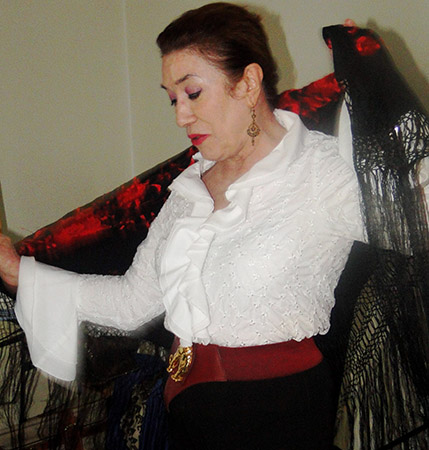
Singing and dancing Carmen, 'L'amour est enfant de Bohème',
august 2016. Photo Marie-Lise Babu
It is for me the very expression of sacredness, as is said in an ancient
Sanskrit text, like Shiva Nataraja, Lord of the Dance : ' To worship God in
dancing fulfills all inspiration, and the way of salvation opens to he who dances'.
It is the celebration of the joy of living, of the union of man with the cosmos,
as the Sufi mystics, the Whirling Derwishes know, retracing in their
circumvolutions the stars' revolutions.
Through dancing I met, as a child, an exeptional woman, solar and charismatic, who gave me all the love and affection I sadly missed since my grandmother's death. Elizabeth Anneliese Simon, taught dancing to the amateur theatrical group I belonged to. Her German Jewish family had fled Nazism from Berlin to Paris, where she studied painting at La Grande Chaumière, having had to abandon her dream of being a dancer after the hardships she endured during the war. She married a Frenchman, an engineer in aeronautics, who gave her two sons. She exercized a determining influence on my life, she encouraged my artistic talents in sharing her experience and knowledge. I admired her beauty, her charm, her culture and her elegance. Under her wing the teenager became a young woman. We sang and danced together, visited exhibitions, boutiques and libraries in Blois, Bourges, Orléans or Paris, went to concerts and the theatre. As a child I had started to write sketches in which I played the heroin, I designed the sets and the costumes, directing my recalcitrant siblings. The theatre has always been for me, as for the Ancient Greeks, a major initiatic art form. The human voice carries a creative force in the pronounced word. I had discovered early, as a child, the orphic power of the voice, when I was twice confronted by some German shepherd dogs and kept them at bay through my words. And I charmed a grosbeak bird from the nearby woods, I tamed it and called it Maia. In London, I explored the power of the voice with Michael McCallion, an expert tutor à RADA, the Royal Academy of Dramatic Art, who used the Alexander Technique for actors and singers, which I also practiced together with yoga in my work as a lecturer.
Since childhood I sang in the choir of the Saint-Georges Church in Salbris. As a boarder at Sainte-Marie, I discovered the joy of singing gregorian chant, Bach, Haydn, Mozart and Beethoven. My first encounter with Haendel's Messiah was extatic and opened me to baroque music : Purcell, Telemann, Vivaldi, Corelli, Gluck, became familiar, then Lulli, Charpentier and Marin Marais. In London, I attended the Haendel opera season at Convent Garden, and I first heard Monteverdi's L'Orfeo at Saint Martin-in-the-Fields. If I am receptive to all forms of music, since childhood I sing the old traditional French songs and ballads, my natural inclination goes to early and baroque musique. However as a teenager, I discovered the American blues, the negro spirituals and the jazz manouche : in Paris, I used to go dancing with my friends to the Caveau de la Huchette, or to the Blue Note, near the Champs Élysées. In Blois, as a student, I took on the discipline of ballet dancing which I continued in London with Thelma Bousfield, formerly of the Ballets Rambert, and I sang with my German friends in the Honegger choir.
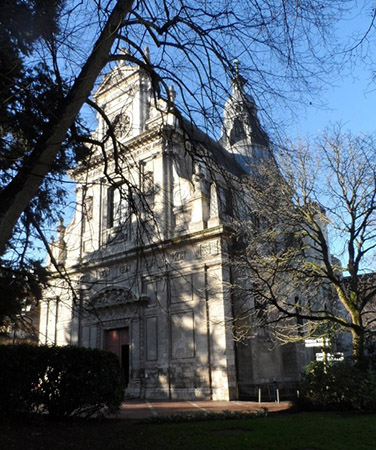
My love for music and dancing is intimately linked to my spirituality
and sense of sacredness. As a child, dancing bare feet in the morning dew was
as thrilling as the early mass. As a boarder, I was enraptured by an organ
concert given by Marie-Claire Alain, in my favourite church in Blois, Saint
Vincent de Paul, the former chapel of the Jesuits' College, 1634-71. Gaston
d'Orléans and his daughter, Anne-Marie de Montpensier, financed its building.
The facade is reminiscent of the Roman Jesuit churches, San Ignazio and Il
Gesù, the mother church of the Company of Jesus. In Rome, I often used to go
there and meditate in St. Ignatius of Loyola's death chamber, 1543, now a
chapel in the palazzo near Il Gésù.
8. SPIRITUALITY, ESOTERISM & FORMER LIVES
I was awakened early to piety by my grandmother, I recall, before the age of seven, going to Sunday mass with her. I still see my white muslin dress embroidered with coloured smocking on the bodice, and I check that my white socks are well pulled over my black varnish shoes with rounded toes and strap. The tall woman, dressed in widow's weeds, I never knew my grandfather, holds my hand, composed and dignified, under her black varnished straw hat. Together we walk to the Chaussée Saint-Victor's church, between corn fields and vineyards. Once inside I am enthralled by the flickering light of the candles, the intoxicating scent of incense and lilies, and in rapture, I listen to her singing in latin. I think that, one day, I too shall sing in that tongue that touches my soul.
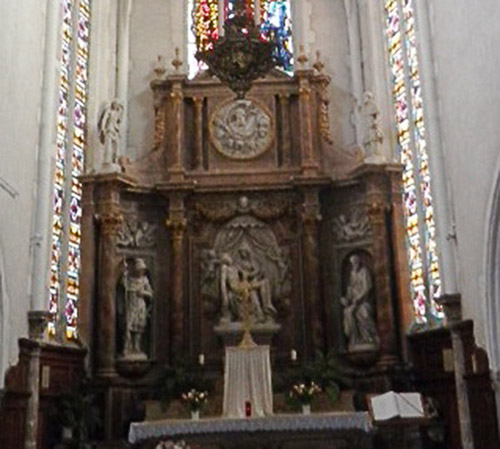
The altarpiece of red marble and scagliola on stone, in the Jesuit
style, 1684, in the 14th century choir of the St. Georges's church at Salbris.
The early 17th century white stone Pietà between the statues of St Georges
and St. Joseph comes from the Saint-Sulpice abbey of Bourges. St. Georges's
is the church of my First Communion and Confirmation. I often used to meditate
at this altar, on the moving representation of maternal love, in its most
essential nature. On my first visit to Rome, with my husband, I discovered
with emotion Michelangelo's original, in white Carrara marble, 1498,
commissioned by Cardinal Jean de Bilhères, the French envoy to Rome,
for his tomb..
I have very early felt this ' inner tension calling the artist to sainthood', according to Franz Liszt. I experienced my first mystical crisis when my mother refused to let me to study at université, as my philosophy professor advised. I therefore taught at an elementaty school of the Sisters of St Vincent de Paul until my majority, then I took my life into my own hands. I could not understand neither her rejection, nor her sadistic malevolence, against which my grandmother had protected me. I threw a challenge to God 'If You exist, prove it !', and gave up all the Sacraments. Meanwhile, I carried on the study of comparative religions initiated with Mlle Mercier in philosophy classes. In Paris, I met the widow of General Bouvard, who was very evolved spiritually. She showed me great kindness and introduced me to esoterism in giving me the volume of The Great Initiates of Édouard Schuré, Rudolf Steiner's friend. I became a member of the Theosophical Society, and met there a Franco-Indian yogi who introduced me to the asceticism of yoga. I was already familiar with meditation in silent spiritual retreats, a discipline I shared with my husband after my marriage. I was thrown in deep suffering and anguish, and one morning in Mayfield, like Saul on the way to Damascus, a revelation came to me, as an iner voice was saying : 'Thou art my beloved daughter !'..
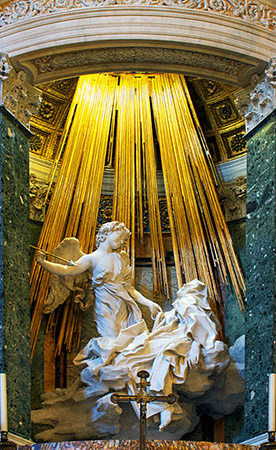
The Ecstasy of St. Teresa of Avila, Bernini, in the Cornaro chapel, in
the church of Santa Maria della Vittoria, Rome, 1647-52. To me God is Love, as
for numerous mystics who have had this ecstatic experience, whatever their
religion : Rumi, Ibn el Arabi, Hafez, St. John of the Cross, St. Francis of
Assisi, St. Teresa of Avila. I lived this rapture in Rome, after having left
London, during a second and intense mystical crisis which lasted for months
and strenghtened my life's meaning and direction. I had studied Ignatius of
Loyala 's 'Spiritual Exercises', and all the world's suffering was overwhelming
me, as I felt desperately alone on this earth. All the cherished ones who had
looked upon me with love and affection, and protected me, had gone during the
years following my husband's death.God seemed to create a vacuum around me,
leaving me exposed to the malevolence of my late husband's family and first
wife, and jealous colleagues envious of my success.
To try to understand the meaning of human suffering, I meditated at length on the Book of Job : how and why is the righteous one so stricken ? I found a comfort and an answer in Carl Jung's 1954 essay : Answer to Job. 'The Book of Job' serves as the paradigm of a certain experience of God, which has a very particular meaning for contemporary man It is better to accept its impact and to submit to its violence violence is made to reach man in his deepest recesses, so that he can yield to its action. He has to suffer from it, if not its full effect shall not touch him. Yet, he must be aware of what is striking him, so as to transform the experience in the knowledge, on the one hand of violence's gratuitousness, on the other hand of its effect upon others ' The Knowledge I was seeking could only come from suffering. Yet it seemed to me that Love, only Love, was the answer to it all, while waiting for the moment when the adverse forces assaulting me from inside and outside, stopped of their own accord, and the right order of things be re-established. Jung said so in his 1957 essay, The Hidden Self : 'Where love stops, power starts, then violence and terror follow'. Our present world is dying from the lack of love.
In spite of all the various difficulties arising on my way, I would neither renounce my life's mission, nor deviate from my path. I then discovered in Notre Dame of Paris an enigmatic painting by Guido Reni, that reinforced my conviction. It is rare depiction of The Triumph of Job, when at last recognized, and rewarded for all the sufferings and outrages of the past, he rises with all fitting honours to his own rightful position.
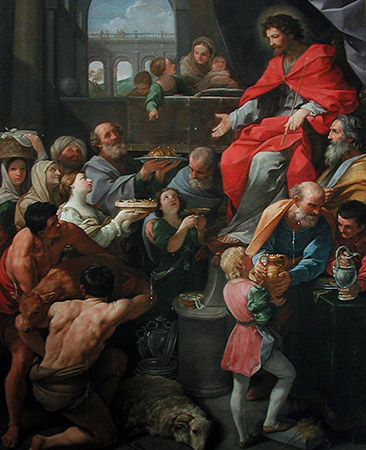
The Triumph of Job stands for perseverance in faith.
Further to a bet between God and Satan, Job resists, he does not
fail his calling, and does not renouce his faith in God. It is
an illustration of the Vulgate of Job : 'Post tenebras spero lucem,
After darkness I hope for light'.
Guido Reni, 1636. Provenance : Church dei Mendicanti, Bologna, Italy, transported to Paris
in 1796. Notre Dame de Paris.
Past lives memory came back to me spontaneously before my marriage, it was a great help in years of adversity. The first two lives I remembered were masculine : a doctor and a general. Paradoxically their experience, source of help and counsel, was very precious in my marriage. Other incarnations presented themselves, as the labyrinth of this present life unravelled its mishaps and meanderings. Each time new awareness and knwoledge were given me to face up to particular situations. It is an intiatic path, acknowledged by Early Christianity until the Constantinople Council condemned it in 553. The Ancient Egyptians, Greeks and Romans, in the Orphic and Pythagorician tradition, have embraced it, as do the Hindu and Buddhist traditions, and the Jewish Kabbala. Plato, Carl Jung, Goethe, Nietzsche, Arthur Schopenhauer, Rudolf Steiner et René Guénon, among others, were adepts of this migration of the soul belief. It is a conviction born of an inner experience, given to a few, but revealing a reality and a potentiality for all.
9. POLITICAL ENGAGEMENT
My first political gesture was to demonstrate in Hyde Park, on the 15th of February 2003, against the war in Iraq. I did so as over 10 million people in the world were gathered together in more than 800 cities, to support France's stand for peace, after Dominique de Villepin's historical speech at the United Nations. It was the largest demonstration of that kind in history. On the podium together with Bianca Jaegger, George Galloway, and Tariq Ali, the former Algerian President Ben Bella ended his speech with a resounding : 'Vive Chirac, Vive la France !' I wrote to Président Chirac to congratulate him and tell him I was proud of being French.
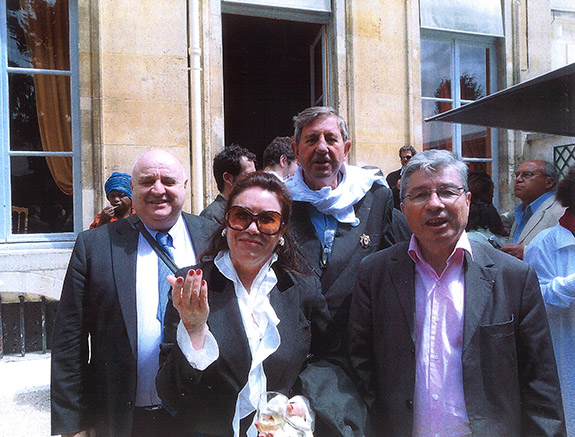
Support to Dominique de Villepin, 19th June 2011, Maison de
l'Amérique Latine in Paris, on the occasion of the first anniversary
of République Solidaire, with Jean-Jacques de la Rochette, and Thierry
Rispal de Villon. Back in Paris, I joined the Club Villepin, then
République Solidaire, his political movement, and canvassed for
him in the presidential campaign in 2012.
I knew nothing about French
politics, I had only voted in England so far. I therefore watched with
dismay Nicolas Sarkozy being elected President in 2007. He is, for me,
a poor clone of Tony Blair, unscrupulous, without conviction nor vision,
a narcissic opportunist, as venal and corrupt as the original. I expressed
in verses my indignation at his infamous Grenoble speech agaisnt the Gypsies,
on the 30th of July 2010. I posted on my Mediapart blog :
https://blogs.mediapart.fr/monique-riccardi-cubitt,
Lamentation sur la mort de Luigi. Hommage au grand Django Reinhardt,
ogether with a compendium of satirical poems on the corruption of Sarkozy's
government, and its dangerous incoherent amateurism,
Portrait d'un petit despote et de son règne calamiteux.
On the 30th of Septembre 2010, I chaired a debate at the Café de Flore on Poetry and Politics. A dear friend was there, a strong and solar woman, passionately anglophile, Françoise de Lassus Saint Geniès. She introduced me to Stéphane Hessel, a diplomat, former résistant, ambassador and minister, also author and political activist in favour of Palestine and the Gypsies. I attended all his meetings and debates during the Arab Spring, see the Mediapart essay : The power of the human spirit. Thank you M. Hessel. On January 1st 2011, he signed my copy of his pamphlet Indignez vous, (Time for outrage), in these terms : 'moving poetess and precious defenderess of all essential causes', assuring me of his 'solidarity'..
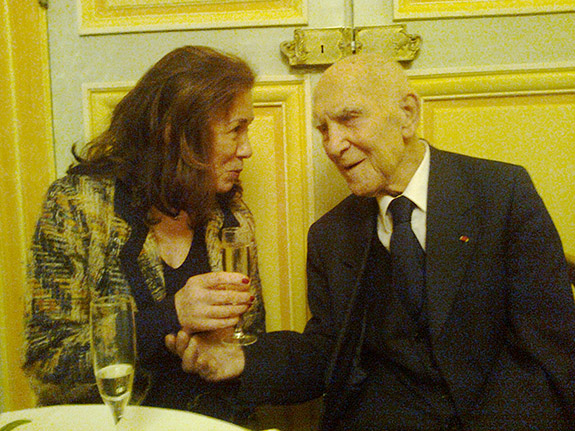
Stéphane Hessel, 30th november 2012, Maison de l'Amérique Latine, at the debate:' The century
in dialogue', chaired by the producer and scriptwriter, Jean-Claude Carrière.
In my militant action for the Gypsies, I launched the project of
having the Jazz Manouche listed at the UNESCO's Mankind Intangible
Heritage, and to create a Gypsy cultural centre, Roma Cultura.
My outrage at the injustice I witnessed compelled me to study the dark side of France's psyche. A collective Shadow has grown heavy over the centuries, and darkened the national spirit. Evil is universal, but only in France has it been codified through its systematic action in sadism, whose author has been elevated to the rank of philosopher of the Enlightenment. My own experience of Evil goes back to childhood. In my family there were two branches, one luminous and angelic on the paternal side, of which I am the heiress. The other one, on the maternal side, was dark and demonic, adept of 'this insolent violation of the soul', denounced by Maria Montessori, aiming to domination through trangression and violence. This eschatological fight resumes all of my life engagement. And I did find it very difficult to address Mario Praz's dark side in his seminal 1930 study, La carne, la morte e il diavolo (The Romantic agony). To protect himself from human malevolence, he had chosen to tread the dark side of the road to exercize power. Nevertheless the study of his life and works was very beneficial, it gave me the necessary distance and detachment to allow for the objective analysis of my native country's psychosis. In France, all conflicts are dealt with in relations of power and violence, one source of the decline of the country and its culture.
In 2015, I joined the British
Conservatives in Paris, and I posted several essays on their website: an
open letter to David Cameron J'accuse, on Western politics in the Middle East,
at the time of the military intervention in Syria, and an essay on Great
Britain and Europe on the occasion of the referendum on the Brexit.
http://www.conservatives-paris.org/our-blog
Life is for me a path, where bonds are tied and untied, in the course of encounters that are as many links, beyond time and space, in an endless chain. It is in constant evolution, not on a linear pattern, but as an ascending spiral where time turns on itself, in an astral ellipse. It is the Ancients'Ouroboros, the serpent biting its tail, in the fulfilment of past and present lives. It is a cosmic dance, where we go from partner to partner, following the laws of attraction and repulsion, consciouly or unconsciously involved in the Platonic search for the alter ego, Rumi's Beloved, and for the Absolute.
And the end of all our exploring
will be to arrive where we started, and know the place for the first time.
T. S. Eliot
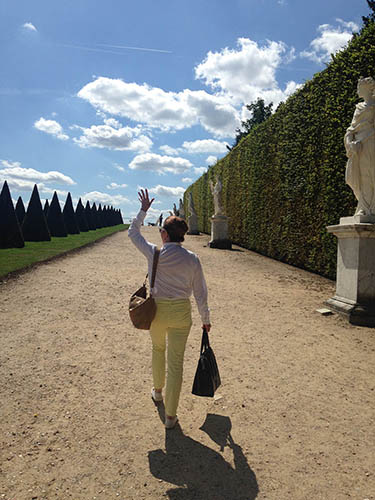
I have tamed and exorcized my Shadow.
On my way, singing and dancing on Life's Path.
Versailles, august 2015. Photo Emmanuelle Soffe
Copyright Monique Riccardi-Cubitt, 2016 - 2022